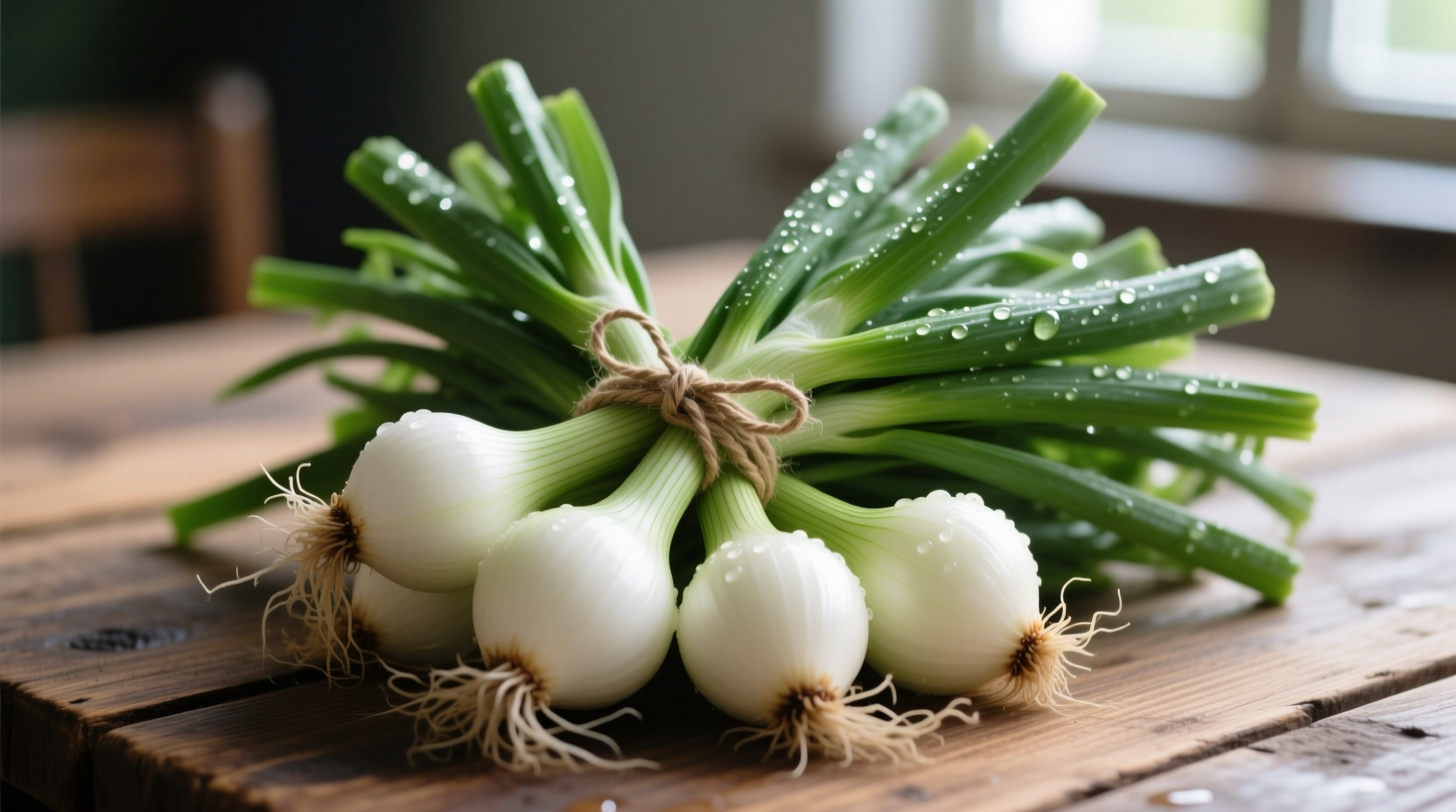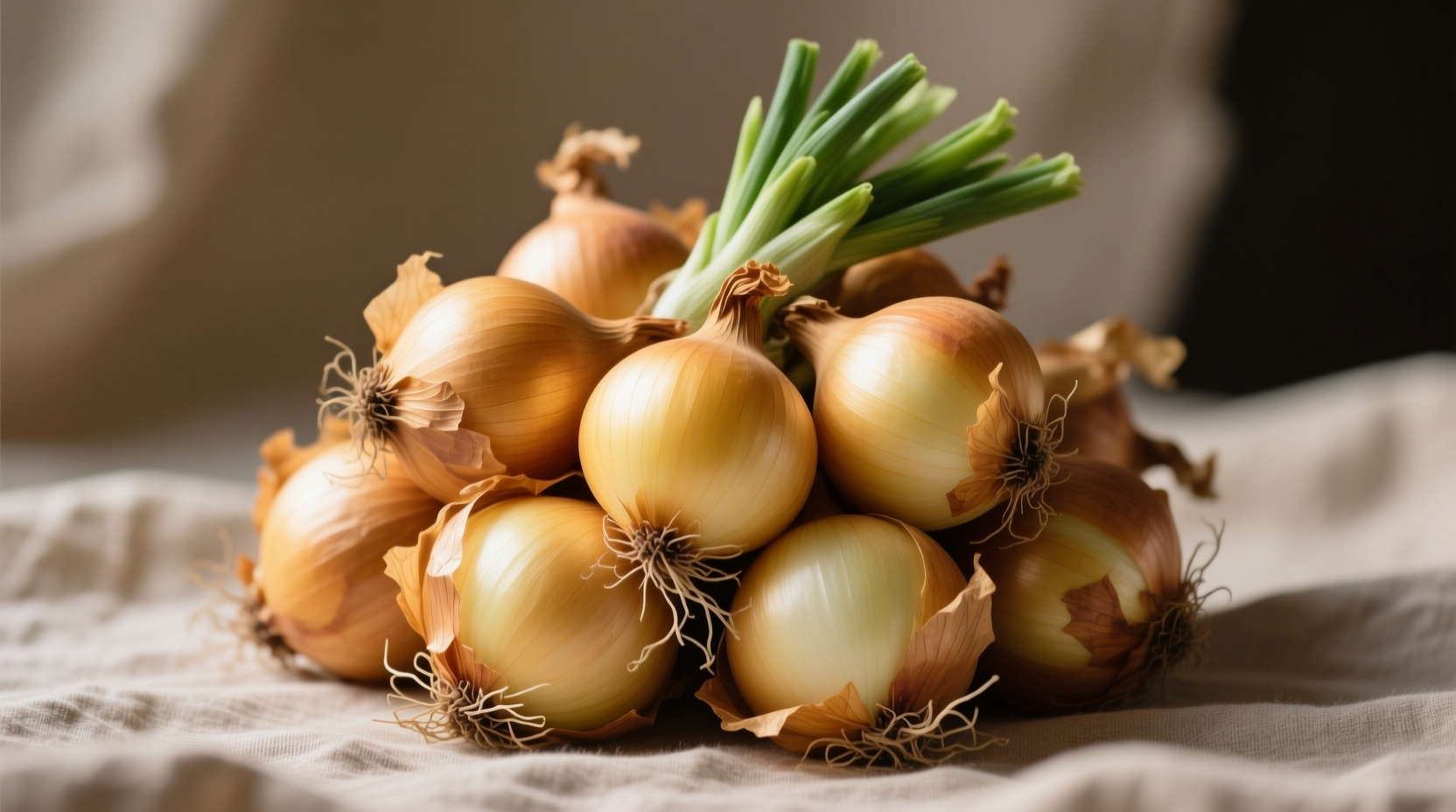If you've ever wondered what makes bunch onions different from regular onions, here's the key fact: bunch onions (also called green onions or scallions) are harvested young before the bulb fully develops, offering a milder flavor and edible entire plant from white root to green stalk. Unlike mature onions, they provide both delicate onion flavor and vibrant color to dishes without overwhelming heat.
When you pick up a bunch of green onions at the market, you're holding one of the most versatile alliums in culinary history. These slender vegetables, scientifically known as Allium fistulosum, have been cultivated for over 5,000 years across Asia and Europe. Unlike their bulb-forming cousins, bunch onions never develop a large underground storage organ, which gives them their distinctive long, cylindrical shape and mild flavor profile that works in both raw and cooked applications.
What Exactly Sets Bunch Onions Apart
The primary difference between bunch onions and regular onions lies in their growth stage and structure. Bunch onions are harvested when young, typically 60-90 days after planting, before the bulb has time to swell significantly. This early harvest creates several distinctive characteristics:
| Feature | Bunch Onions | Mature Bulb Onions |
|---|---|---|
| Growth Stage | Harvested young (60-90 days) | Harvested mature (100-170 days) |
| Bulb Development | Minimal bulb formation | Large, layered bulb |
| Flavor Profile | Mild, fresh, slightly sweet | Strong, pungent when raw |
| Edible Parts | Entire plant (white to green) | Primarily bulb |
| Storage Life | 7-10 days refrigerated | 1-2 months in cool storage |
Selecting the Freshest Bunch Onions
Your cooking success with bunch onions starts at the market. Look for these quality indicators when selecting:
- Vibrant color - Bright green tops without yellowing or wilting
- Firm texture - Crisp stalks that don't bend easily
- White root ends - Clean, moist roots indicate recent harvest
- No flowering - Avoid plants with seed stalks emerging
- Consistent diameter - Uniform thickness suggests even growth
According to agricultural research from Cornell University's Vegetable Program, the best bunch onions maintain turgor pressure in their cells, which creates that desirable crisp texture. When the stalks begin to soften, it indicates cellular breakdown and flavor deterioration.
Proper Storage Techniques for Maximum Freshness
Unlike storage onions that thrive in cool, dark places, bunch onions require different handling to maintain their delicate flavor and texture. The USDA Food Safety and Inspection Service recommends these storage methods:
- Refrigeration is essential - Store in the high-humidity crisper drawer
- Trim roots - Cut off dry root ends before storing
- Keep dry - Moisture accelerates spoilage; wrap in dry paper towel
- Stand upright - Place in a glass with 1 inch of water, covered with a plastic bag
- Use within 7-10 days - They deteriorate faster than bulb onions
For longer storage, you can freeze chopped bunch onions, though this changes their texture. The National Center for Home Food Preservation notes that frozen bunch onions work well in cooked dishes but lose their crispness for raw applications.

Culinary Applications: When and How to Use Bunch Onions
The magic of bunch onions lies in how different parts deliver distinct flavor profiles. Professional chefs utilize this gradient to build complex flavors in dishes:
- White base - Most pungent; best for sautéing at the beginning of cooking
- Light green section - Moderate flavor; add during mid-cooking
- Dark green tops - Mildest flavor; perfect for garnishing finished dishes
When substituting bunch onions in recipes calling for regular onions, use approximately three times the amount of bunch onions to achieve similar flavor intensity. Remember that cooking transforms their flavor - the heat mellows their sharpness while developing natural sweetness.
Common Mistakes to Avoid With Bunch Onions
Even experienced cooks sometimes mishandle these delicate alliums. Here are critical errors to avoid:
- Overcooking - They turn mushy quickly; add green parts in the last 2-3 minutes
- Improper washing - Dirt collects between layers; soak in cold water then rinse
- Using only green parts - You're missing the most flavorful white section
- Storing with ethylene producers - Keep away from apples and bananas which accelerate spoilage
- Cutting too far in advance - Oxidation begins immediately after cutting
Seasonal Availability and Substitutions
Bunch onions enjoy a longer growing season than many vegetables, but their peak quality varies throughout the year:
| Season | Availability | Flavor Profile | Best Substitutes |
|---|---|---|---|
| Spring (Mar-May) | Peak season - most tender | Delicate, sweetest flavor | Chives, ramps |
| Summer (Jun-Aug) | Abundant but stronger flavor | More pronounced onion taste | Shallots, leeks |
| Fall (Sep-Nov) | Second peak season | Balanced flavor | Young leeks, spring onions |
| Winter (Dec-Feb) | Limited availability | Strongest flavor of year | Shallots, dried onion flakes |
When bunch onions aren't available, consider these substitutions based on your recipe's requirements. For raw applications, chives provide similar mildness but with different texture. For cooked dishes, young leeks offer comparable flavor development.
Nutritional Benefits Worth Knowing
Bunch onions deliver impressive nutritional value beyond their flavor contribution. According to USDA FoodData Central, one cup (100g) of chopped bunch onions provides:
- 32 calories
- 2.6g dietary fiber (9% of daily value)
- 117% of daily vitamin K
- 27% of daily vitamin C
- Significant amounts of vitamin A, folate, and potassium
Research published in the Journal of Agricultural and Food Chemistry shows that the green portions contain higher concentrations of certain antioxidants compared to the white base. This makes using the entire plant nutritionally advantageous.
Simple Recipe Idea to Get Started
Try this professional chef technique to maximize flavor from your bunch onions:
Quick Sautéed Bunch Onions with Lemon Zest
- Separate white and green parts
- Heat 1 tbsp olive oil in skillet over medium heat
- Add white parts and sauté for 2 minutes until slightly softened
- Add green parts and cook 1 more minute
- Remove from heat and stir in 1 tsp lemon zest and salt to taste
- Serve immediately as a side or topping for proteins
This simple preparation highlights how bunch onions transform from sharp to sweet when cooked properly, making them the perfect flavor enhancer for countless dishes.











 浙公网安备
33010002000092号
浙公网安备
33010002000092号 浙B2-20120091-4
浙B2-20120091-4